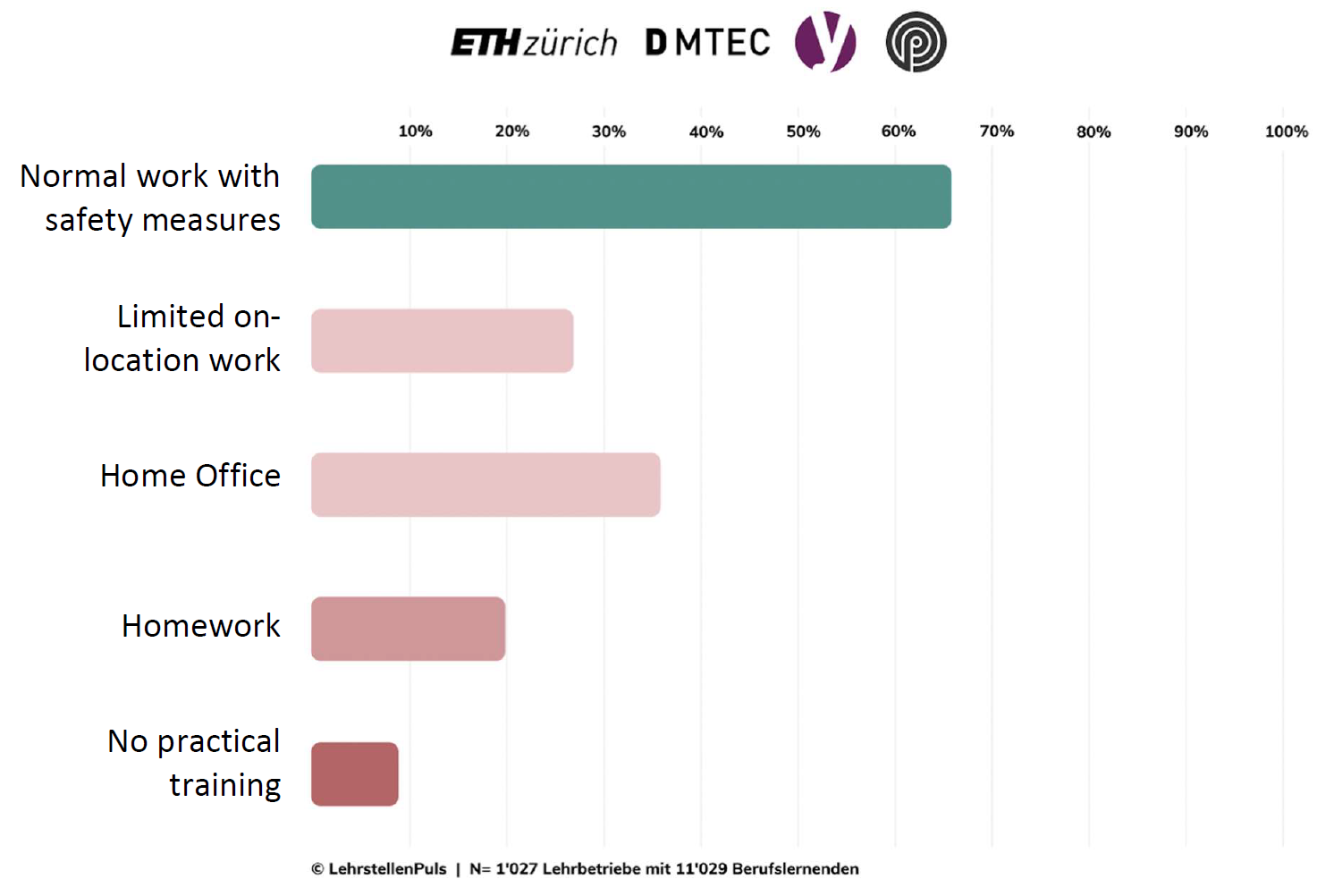Taking the pulse of Swiss apprenticeship: should we be worried?
Zurich, May 7th 2020: The COVID-19 pandemic is affecting dual vocational education and training (VET). The initial results show that during the lockdown about one-third of current apprentices either could not carry out the work-based part of their training or did it in an alternative form.
By Katie Caves
According to the Federal Bureau of Statistics, a total of 220,894 young people in Switzerland completed dual vocational education and training (VET) in 2019 (BSF 2020). In 2017, 162,000 young adults faced the decision of whether to pursue VET or general education.
According to the Apprenticeship Barometer, 82,500 of these young people opted for dual VET (LINK Institute 2017). For the Swiss economy and the development of skilled workers, apprenticeships have a central function.
The research project focuses on Swiss apprenticeships and analyses the effects of COVID-19 on the work-based section of apprenticeship training over the period of one year. This analysis will provide VET/PET actors with evidence-based information that will help them create and initiate group-specific actions.
The research project focuses on three distinct groups of young people (see external page FaktenblattJugendgruppen):
- Young people looking for and choosing apprenticeships (G1)
- Current apprentices who are not in their final year (G2)
- Current apprentices who are in their final year (of a 2-, 3- or 4-year apprenticeship (G3)
Good News
The analysis of the first survey sheds light on the following developments:
- 92% of apprenticeships originally offered for next fall still exist
- 22% of surveyed companies that offer training claimed that they can offer additional apprenticeship places in response to the COVID-19 pandemic.
Concerning Facts
- The surveyed companies claim that 5.5% of this fall’s new apprenticeships will be cut.
- 2.8% of the new apprenticeship positions this fall have already been cut due to COVID 19.
One-fourth of apprenticeship positions are still vacant
In April 2020, the surveyed companies stated that only 76% of their apprenticeship places were filled. Even the most popular occupational fields such as information technology, planning & construction, retail trade, business administration and tourism had vacancies, with only around 87-94% of apprenticeship positions filled. Among positions in building technology, only 44 % were filled.
According to the VPET Act, the Swiss Confederation should monitor imbalances in the apprenticeship market and take measures if necessary (Art. 13 BBG, 2015). Since many economic forecasts predict a downturn in the second half of this year, special attention must be paid to the apprenticeship market. In doing so, the different recruitment phases between German and Latin Switzerland must be taken into account (see external page FaktenblattLehrstellenmarkt).
Figure 1 shows that in the lockdown phase, 66% of the apprentices included in the study (G2, G3) were able to complete the work-based part of their apprenticeship at work as usual (subject to federally-mandated protective measures). 27% of apprentices were only able to
work at a limited capacity, for example in a different department. 36% worked from home. However, some are unable to perform the work-based part of the apprenticeship. Instead, 20 % received homework and 9% were not able to do anything.

Uncertainty after the Apprenticeship
Around 60% of current apprentices are completing their apprenticeships in companies that plan on employing the same amount of graduating apprentices as in previous years. 14% of apprentices are in companies that generally do not hire apprentices, and 2% of apprentices work in companies that intend on hiring more graduating apprentices this year. 4% of apprentices work in companies that plan on hiring fewer graduating apprentices. It is not possible at this point for the companies of 21% of apprentices to state whether they will
hire more or less graduates as this action depends on various business developments. In total, about 25% of apprentices are working for companies that that are less likely than before to employ them full-time upon completion of their apprenticeship.

Additional Information
Additional data, graphics and information can be found (in German and French ) at: external page www.lehrstellenpuls.ch.
For more detailed information on the research project, please check out the factsheets and the website.
Project Authors - Chair of Education Systems
- Thomas Bolli
- Katherine Caves
- Filippo Pusterla
- Ladina Rageth
- Ursula Renold
- Aranya Sritharan
Research Partners - Yousty.ch
- Urs Casty
- Domenica Mauch
Press release translated by Sarah Lueling